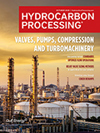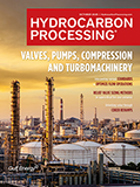Heat Transfer
Reduce moisture intrusion in pipes, tanks and other equipment
Once water enters the system, even at high temperatures, the insulation system can retain large quantities of water. That can then lead to accelerated heat gain or loss.
Consider new steam system corrosion protection for refineries
New technology in volatile filming corrosion inhibitors and lower-salting neutralizing amines can provide cost-effective solutions for the steam-condensate system and minimize the risk of amine chloride salt formation.
Case study: Service life assessment of boiler superheater tubes
Boilers are used in petrochemical facilities to generate steam that can be used to meet process and utility requirements. Many industrial boiler designs can be shop assembled and are therefore referre..
Consider automation to check shell-and-tube heat exchanger design
This automated checklist tool can be used to quickly check the acceptability of your design configuration based on the various project, client and services requirements.
Alfa Laval to supply heat exchangers at Middle East refining complex
The Alfa Laval Packinox heat exchangers will be included in a process to remove non-desirable substances, such as sulfur, from the feedstock at an integrated refining and petrochemical complex.
Case history: Characterization of shale oils and heat exchanger performance
LTOs are paraffinic, low in asphaltenes but high in filterable solids. Understanding the impact of these mechanisms can shed light on preheat exchanger performance and the prediction of fouling rates.
Inspect steam reformers and catalyst tubes with infrared thermography
Infrared thermography is a useful inspection tool to help locate problems in steam reformers while the units are online and fired. There are three main areas in a reformer that can be efficiently insp..
Update on ambient heat transfer for storage tanks
Heat gain from ambient or heat loss to atmosphere is discussed in standards and technical publications.1, 2 However, the work on fluid/ambient thermal interactions rarely includes an important factor&..
Decrease tube metal temperature in vacuum heaters
Various options for reducing the TMT of a vacuum heater, such as changing the transfer line size and adding extra surface area in the radiation and convection sections, are examined here. The best option generally depends on the limitations under which the heater operates with regard to the process requirements and the downstream equipment limitations and flexibility.
HP Water Management: Best practices for RO operations
Widespread use of reverse osmosis (RO) technology in industrial applications began in the late 1980s, following the introduction of polyamide materials that had a significantly higher permeate flow an..

- Asian gasoline margin spikes to highest since August 2023 11/14
- Lukoil-Moldova grants free use of airport fuel terminal to government amid U.S. sanctions 11/14
- Croatia rejects Russian vacuum gasoil cargo after U.S. sanctions 11/14
- Bulgaria wins UK sanctions reprieve on refinery, petrol stations 11/14
- China's Sinochem shuts one crude unit at Quanzhou after fire 11/14
- Enbridge approves $1.4-B project to boost Canadian oil flows to U.S. refiners 11/14




